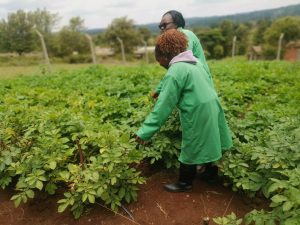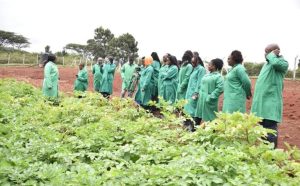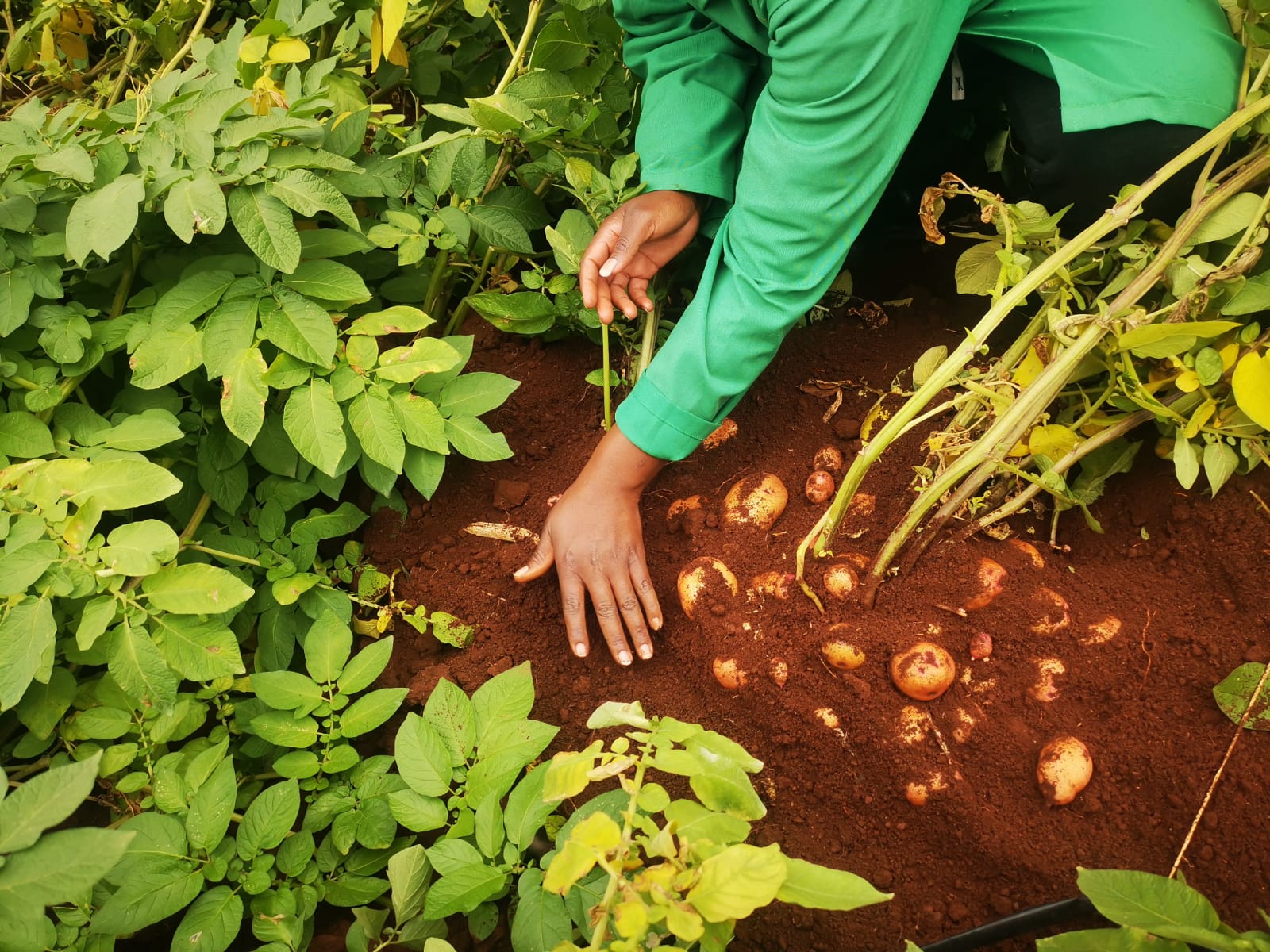Kenya is inching closer to commercializing a genetically modified (GMO) potato resistant to late blight disease, following years of intensive research led by the Kenya Agricultural and Livestock Research Organization (KALRO) in partnership with global and regional institutions.
The breakthrough was highlighted during a media study tour at KALRO’s Confined Field Trial site in Muguga, organized in collaboration with the International Service for the Acquisition of Agri-biotech Applications (ISAAA AfriCenter) and the Open Forum on Agricultural Biotechnology in Africa (OFAB). The visit offered journalists firsthand insights into the science, safety, and potential impact of the biotech potato, while also aiming to strengthen accurate, evidence-based reporting on biotechnology, food security, and agricultural innovation.
Potato is Kenya’s second most important food crop after maize, yet its production is severely constrained by late blight disease, which can wipe out up to 30% of yields. Farmers spend heavily on fungicides—sometimes spraying more than a dozen times per season—raising production costs and exposing both themselves and the environment to chemical risks.
“This new potato variety carries genes that provide complete resistance to late blight,” explained Dr. Moses Nyongesa, a KALRO research scientist. “Once released, farmers will no longer need to spray fungicides against the disease, drastically cutting costs while boosting yields by up to 30%.”
Dr. Nyongesa added that Kenya currently produces about three million metric tons of potatoes annually, and the adoption of the biotech variety could significantly raise production, supporting the country’s food security agenda.
Conventional breeding of blight-resistant potatoes takes 10 to 15 years, but modern biotechnology has accelerated the process. According to Dr. Miriam Mbiyu of KALRO, researchers inserted genes from wild potato relatives into local Kenyan varieties such as Shangi, Asante, and Tigoni.
“We have confirmed in both lab and field trials that these varieties withstand late blight, with no difference in nutrition, taste, or agronomic traits compared to non-GMO potatoes,” Dr. Mbiyu said. “Nutritional analysis of proteins, carbohydrates, and phenolic compounds showed they are identical to conventional potatoes.”
The team has completed confined field trials in Kiambu, Nyandarua, and Nakuru counties. Data has already been submitted to the National Biosafety Authority (NBA), which oversees biotechnology regulation. Pending approval, the potatoes will undergo National Performance Trials across six potato-growing regions, overseen by the Kenya Plant Health Inspectorate Service (KEPHIS), before they can be officially released.
According to KALRO researchers, if the regulatory process moves smoothly, Kenya could approve its first GMO potato variety by late 2026, joining other nations that have adopted biotech crops. Currently, 29 countries cultivate GM crops on more than 200 million hectares. Africa has already embraced GMO cotton, maize, soybean, and cowpea, with virus-resistant cassava also nearing release.
“Late blight is a devastating disease, and farmers here spray up to 13 times a season to manage it,” said Dr. Paul Chege, a plant scientist at ISAAA AfriCenter. “This technology not only saves farmers money and labor but also reduces chemical exposure risks. The only barrier is misinformation, which is why engaging the media is critical.”
Once the GMO potato variety is cleared for release, seed bulking and distribution will follow to ensure availability for farmers. KALRO expects seed companies to play a key role in scaling access.
“As an agricultural research organization, our role is to provide farmers with technology and choices,” said Dr. Nyongesa. “This potato is no different from the conventional ones farmers know—except that it is protected from a disease that has long robbed them of income.”
With Kenya’s potato demand steadily rising and food security challenges mounting, the biotech potato could mark a turning point for smallholder farmers and strengthen the nation’s agricultural resilience.
